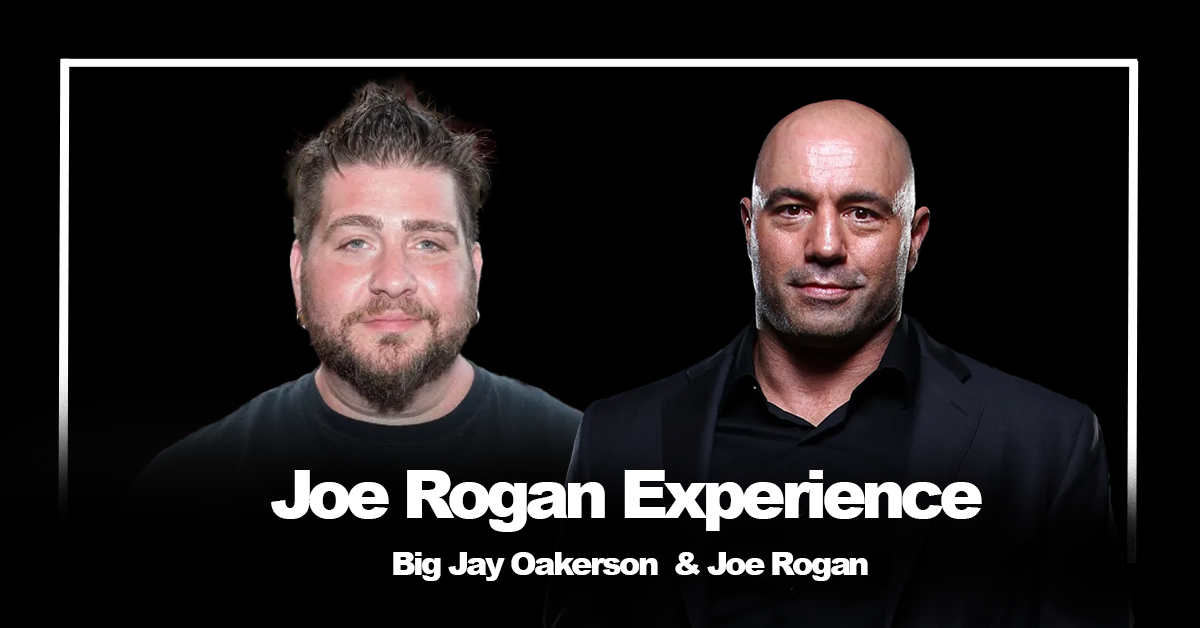This week, Joe Rogan sits down with comedian Big Jay Oakerson, a veteran of the stand-up scene known for his raw, honest, and often outrageous humor. They dive deep into the evolution of comedy, Jay’s personal journey, memorable (and sometimes bizarre) gigs, the pressures of the industry, and navigating life as a performer fighting age (and maybe gravity).
It’s a classic JRE hang – candid, funny, and full of behind-the-scenes stories from the world of comedy, with tangents into everything from wacky history and questionable fashion choices to narcoleptic road trips and the absurdity of modern life.
Here are the detailed key insights and takeaways:
1. The Changing Face of Comedy:
- Evolution from “Sitcom Hopefuls”: Jay reflects on the early days (late 90s/early 00s) when the ultimate goal for many comics was landing a sitcom deal (like Evening at the Improv serving as an audition). This contrasts sharply with today’s multi-platform reality.
- The Network Grind: Recounts the pressure from managers to conform to a certain image or style to land network deals, even if it meant abandoning one’s authentic voice. Contrasts this with his own path of sticking to his style.
- Demise of “Woke Comedy”? Joe and Jay discuss the intense period where social commentary and “message” comedy seemed paramount, potentially overshadowing pure funniness (referencing Hannah Gadsby). They feel the pendulum might be swinging back, partly crediting things like the Tom Brady roast for reminding audiences that it’s okay to laugh at edgy jokes again.
- The Rise of Podcasting/Direct Connection: The modern comic builds their audience directly through podcasts and social media, bypassing traditional gatekeepers.
2. Jay’s Journey & Comedic Style:
- Early Days & Blending In: When starting out, Jay felt pressure to “blend in” with the prevailing comedy styles of the time (e.g., the “black circuit” look – black loafers, dungarees).
- Finding His Voice: His path involved figuring out his unique comedic identity, which includes observational humor, storytelling, and a willingness to be vulnerable and self-deprecating.
- Fighting Age (Literally & Figuratively): Jokes about getting older, coloring his hair, getting nose rings (“fighting age”), and the physical toll of the comedian lifestyle (late nights, travel).
- Confidence Through Repetition: Emphasizes the importance of stage time. Bombing is painful, but surviving it builds resilience and confidence. Knowing you can handle silence or a tough crowd is crucial.
3. Memorable Gigs & Bizarre Encounters:
- Opening for Bobby Slayton: Recalls a gig opening for the notoriously aggressive Bobby Slayton at the West Palm Improv.
- Narcoleptic Driver: Hilarious story about hanging out with a local legend comic in West Palm who turned out to be severely narcoleptic, falling asleep and snoring loudly at every red light while driving Jay around.
- Guns N’ Roses Backstage: Meeting Axl Rose recently and getting invited backstage with his family after a show in Greece.
- Corey Feldman: Shared an anecdote about Corey Feldman’s intense self-seriousness and unique performance style.
- Meeting Ace Frehley as a Kid: His uncle was an artist who designed KISS album covers, leading to a childhood encounter with Ace Frehley (sans makeup).
4. The Art of Crowd Work & Handling Hecklers:
- A Skill: Jay acknowledges Joe’s mastery of crowd work and engaging with the audience.
- Reading the Room: Essential to gauge the audience’s energy and adjust. Sometimes you need to meet aggression; sometimes you need to de-escalate.
- Fake Anger: Discusses the phenomenon of “fake anger” in comedy, where performers might amplify outrage for effect, noting it can be hilarious but requires skill.
- Dealing with Tough Crowds: Recounts a story of a comic facing a difficult audience member and skillfully turning the situation around, highlighting the intelligence and quick thinking required.
5. Modern Life & Weird Observations:
- Over-the-Top Plastic Surgery: Discusses the trend of extreme plastic surgery (like BBLs – Brazilian Butt Lifts) and the sometimes bizarre results, comparing it to comic book characters or unfortunate accidents.
- Anchamima & Racist Relics: Tangent about the controversy around Aunt Jemima branding and discovering the (often racist) history behind certain old cartoons and illustrations (like early Dr. Seuss).
- The “Safety” Obsession: Laments the modern tendency towards hyper-caution and the reluctance to take risks or endure hardship, contrasting it with past generations.
- Phone Addiction: Acknowledges the absurdity of constant phone checking and the difficulty of disconnecting, even while recognizing its negative impact.
6. On Process & Staying True:
- No Rules (Jay’s Philosophy): Believes in constructing your own work and life according to your own rules, even if it means ignoring conventional wisdom or trends.
- Choosing the Mess: Embraces the inherent messiness of life and creative pursuits, arguing that avoiding difficulty often means missing out on growth and fulfillment.
- Knowing What You Want: Underlines the importance of self-awareness – understanding what truly motivates you and brings you joy, rather than just chasing external validation or metrics.
Final Thought:
This conversation was a hilarious and insightful hang with one of comedy’s most authentic voices. Big Jay Oakerson shared candid stories and perspectives on the craft, the industry, and the absurdity of navigating modern life. It’s a reminder that comedy, at its best, reflects the human condition, warts and all, and that finding your own voice often means embracing the chaos and learning to laugh through the tough spots.
Listen to the full JRE episode here: [Link to Episode]
Find Big Jay Oakerson on his podcasts, The Legion of Skanks and The SDR Show, and check his tour dates.
Until next time,
The Podcast Notes Team





